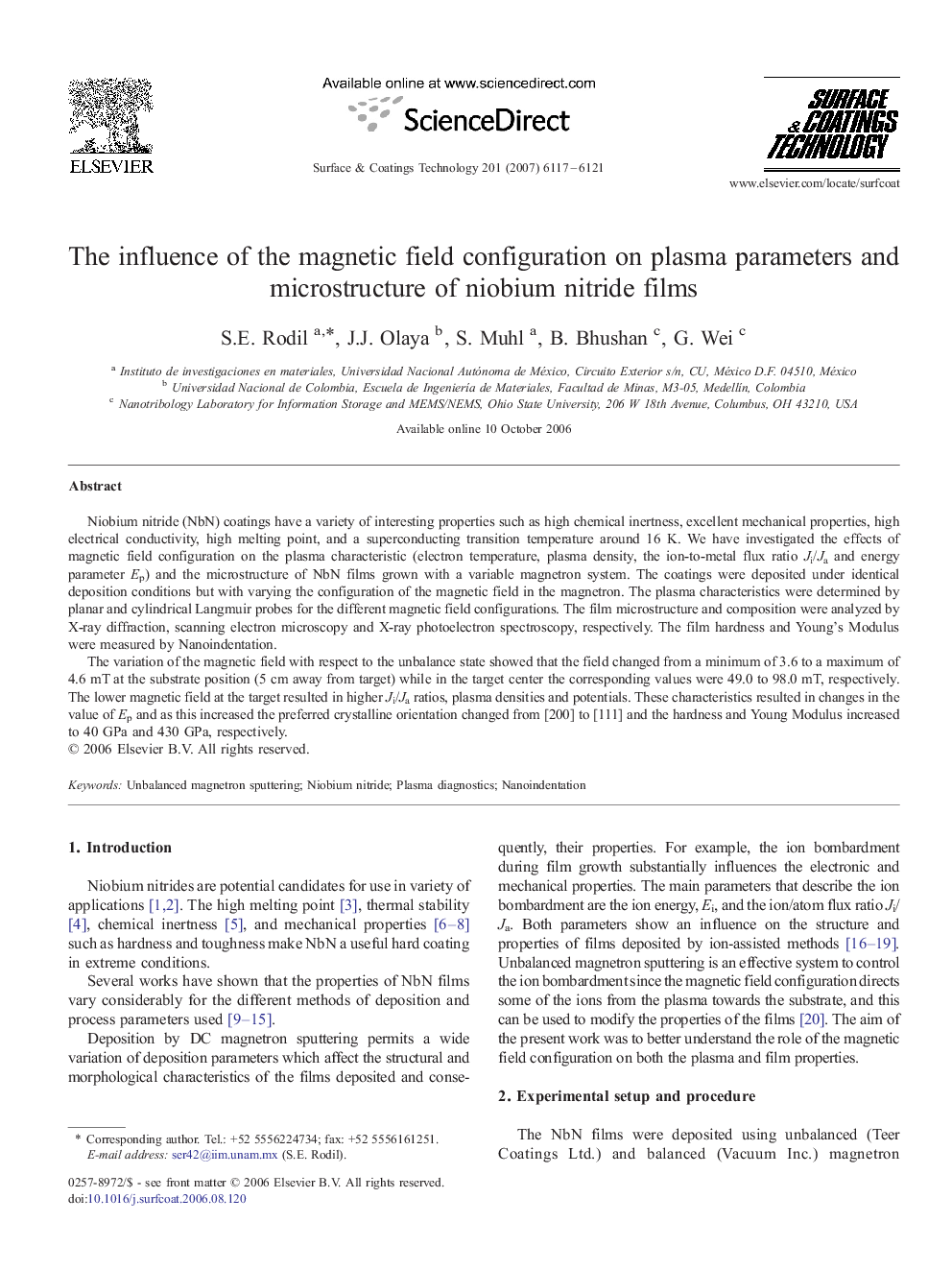| Article ID | Journal | Published Year | Pages | File Type |
|---|---|---|---|---|
| 1661345 | Surface and Coatings Technology | 2007 | 5 Pages |
Niobium nitride (NbN) coatings have a variety of interesting properties such as high chemical inertness, excellent mechanical properties, high electrical conductivity, high melting point, and a superconducting transition temperature around 16 K. We have investigated the effects of magnetic field configuration on the plasma characteristic (electron temperature, plasma density, the ion-to-metal flux ratio Ji/Ja and energy parameter Ep) and the microstructure of NbN films grown with a variable magnetron system. The coatings were deposited under identical deposition conditions but with varying the configuration of the magnetic field in the magnetron. The plasma characteristics were determined by planar and cylindrical Langmuir probes for the different magnetic field configurations. The film microstructure and composition were analyzed by X-ray diffraction, scanning electron microscopy and X-ray photoelectron spectroscopy, respectively. The film hardness and Young's Modulus were measured by Nanoindentation.The variation of the magnetic field with respect to the unbalance state showed that the field changed from a minimum of 3.6 to a maximum of 4.6 mT at the substrate position (5 cm away from target) while in the target center the corresponding values were 49.0 to 98.0 mT, respectively. The lower magnetic field at the target resulted in higher Ji/Ja ratios, plasma densities and potentials. These characteristics resulted in changes in the value of Ep and as this increased the preferred crystalline orientation changed from [200] to [111] and the hardness and Young Modulus increased to 40 GPa and 430 GPa, respectively.
